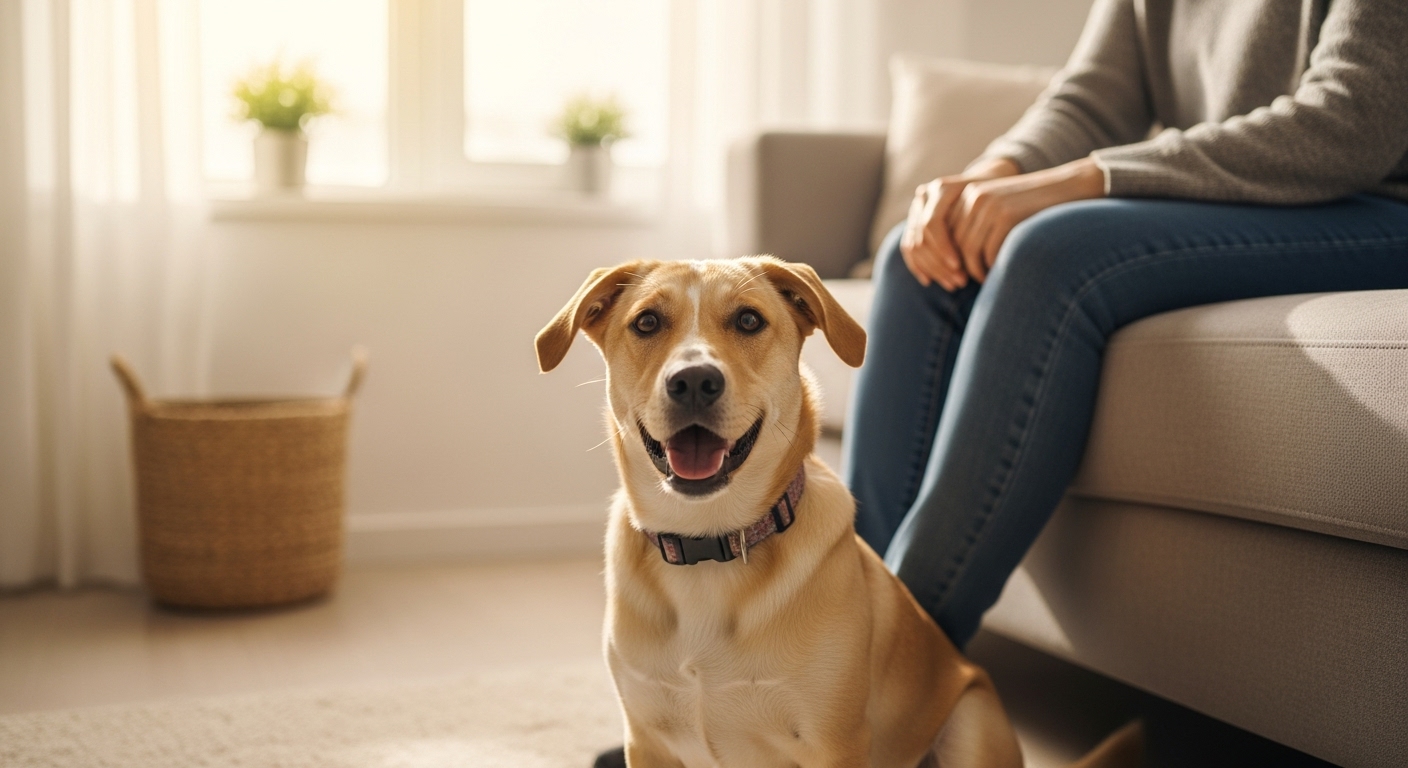Just like humans, dogs experience stress — but they express it differently. While we might complain, sigh, or retreat, our furry companions often show subtle physical or behavioral cues that are easy to overlook. Recognizing the signs your dog is stressed early can prevent anxiety from escalating into destructive or aggressive behavior.
In this complete guide, you’ll learn how to identify stress in dogs, understand the root causes, and apply proven techniques to restore calm and confidence.
Understanding Stress in Dogs — What It Looks Like and Why It Happens
Dogs can’t tell us when they’re stressed, but their bodies and behaviors speak volumes. Understanding the causes of stress is the first step toward helping your dog feel safe and happy.
1. Common Causes of Stress in Dogs
Stress in dogs can stem from a variety of factors:
-
Environmental changes — moving homes, loud noises, or unfamiliar visitors.
-
Lack of structure — inconsistent routines can confuse and overwhelm dogs.
-
Social tension — conflicts with other pets or strange animals.
-
Medical issues — pain or illness often causes irritability and anxiety.
Even positive changes, such as bringing home a new baby or puppy, can create stress if your dog feels uncertain about their place in the household.
2. The Science Behind Canine Stress
When stressed, your dog’s body releases cortisol, the “stress hormone.” Chronic stress raises cortisol levels, which can weaken the immune system, disrupt digestion, and affect mood.
Studies show that long-term stress in dogs can lead to health problems similar to humans — including fatigue, poor appetite, and behavioral regression.
3. Early Physical and Behavioral Signs
Dogs communicate stress through subtle cues, including:
-
Excessive yawning or panting when not hot.
-
Lip licking or drooling without food present.
-
Avoidance behaviors — turning away, hiding, or refusing to make eye contact.
-
Pacing, whining, or barking excessively.
-
Shaking off as if drying after a bath — a sign of releasing tension.
Recognizing Emotional and Behavioral Stress Signals
Beyond physical cues, dogs often show stress through changes in mood, habits, or reactions to everyday situations. Recognizing these emotional signs helps you respond before anxiety turns into more serious issues.
1. Clinginess or Withdrawal
Some stressed dogs become overly attached, following you everywhere and whining when left alone. Others withdraw, seeking quiet corners to hide.
Both extremes suggest emotional imbalance that needs gentle reassurance.
2. Aggression or Reactivity
Stress can trigger defensive aggression — growling, snapping, or guarding behavior.
This doesn’t mean your dog is “bad.” It’s a natural response when they feel scared or threatened.
Address the root cause, not just the symptom, by identifying what’s triggering fear or insecurity.
3. Destructive Behavior
Chewing furniture, digging, or shredding pillows can be a way for dogs to release nervous energy. If your dog is well-trained but suddenly destructive, stress is often the culprit.
4. Changes in Eating or Sleeping Habits
A stressed dog may eat less, refuse food, or sleep excessively. Others might pace at night or become restless.
Tracking changes in daily habits is one of the best ways to detect hidden stress.
How to Help Your Dog Relax and Manage Stress Naturally
Once you’ve identified the signs your dog is stressed, the next step is to help them cope effectively. The good news is that most stress can be reduced with consistent care, structure, and positive reinforcement.
1. Create a Calm Environment
Dogs feel safest when their surroundings are predictable. Keep noise low, avoid sudden changes, and maintain a consistent daily routine for feeding, walks, and play.
Provide a safe space — such as a crate, quiet corner, or soft bed — where your dog can retreat when overwhelmed.
2. Provide Physical and Mental Stimulation
Boredom often fuels anxiety. Engage your dog in daily exercise suited to their breed and energy level.
Interactive toys, scent games, or obedience training sessions challenge the mind and body, channeling energy into positive outlets.
3. Use Calming Techniques
-
Massage and gentle touch: helps relax tense muscles.
-
Calming music or white noise: proven to lower heart rate in anxious dogs.
-
Pheromone diffusers or natural supplements: promote relaxation without sedation.
4. Practice Positive Reinforcement
Reward calm behavior with treats, praise, or affection. Avoid punishment, as it increases fear and stress.
If your dog reacts nervously to loud noises or guests, pair those triggers with something positive — like treats or playtime — to change emotional associations.
5. Seek Professional Help When Needed
If your dog’s stress persists despite consistent care, consult a veterinarian or certified dog behaviorist.
They can rule out medical causes and design a personalized stress management plan.
Building a Happier, Calmer Dog
Recognizing the signs your dog is stressed is an act of love. By observing, understanding, and responding calmly, you can turn anxiety into trust.
Every dog deserves to feel safe, understood, and supported. With patience, consistency, and empathy, you’ll not only reduce stress — you’ll strengthen your bond and create a peaceful home for your best friend.




